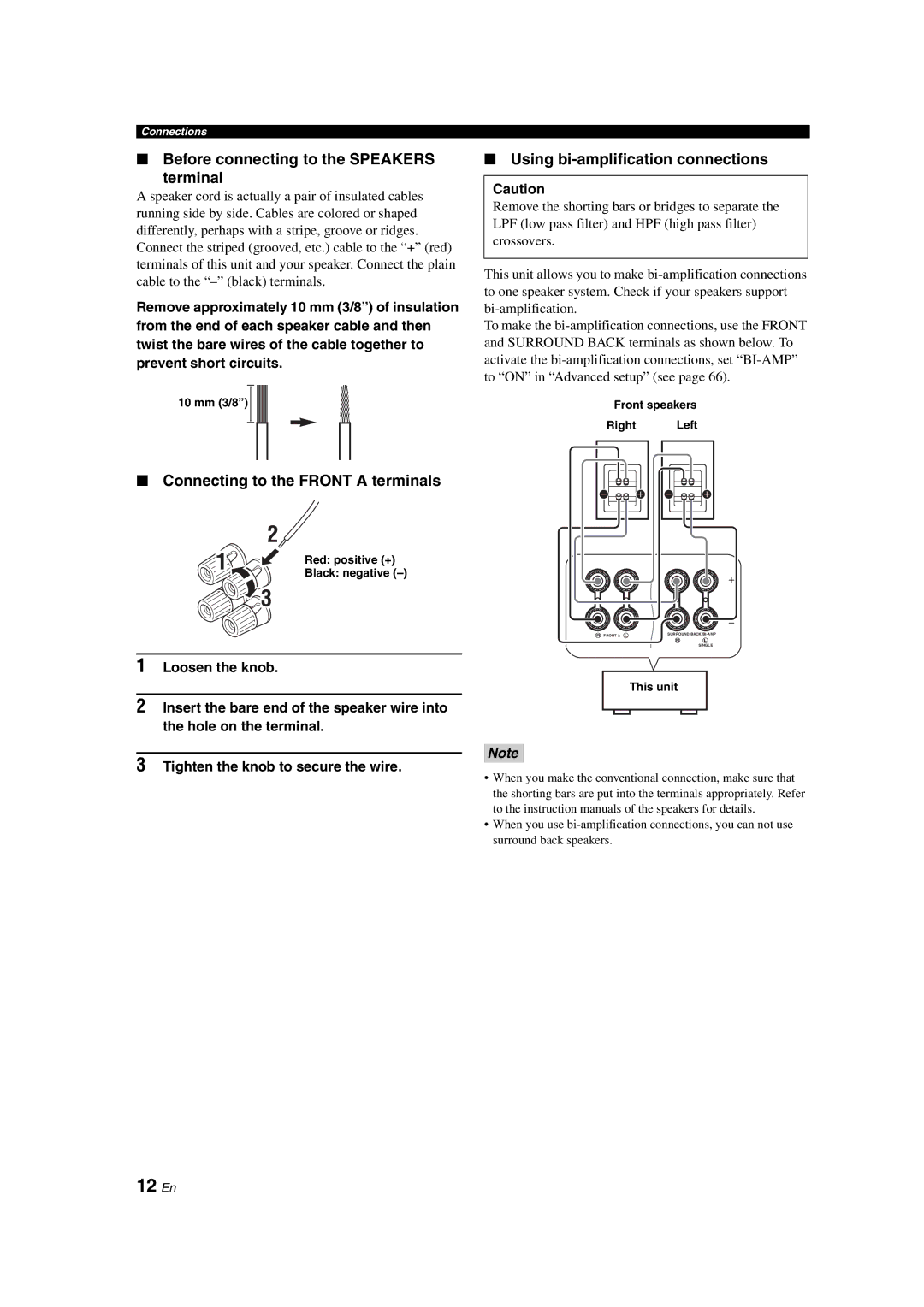
Connections
■Before connecting to the SPEAKERS
terminal
A speaker cord is actually a pair of insulated cables running side by side. Cables are colored or shaped differently, perhaps with a stripe, groove or ridges.
Connect the striped (grooved, etc.) cable to the “+” (red) terminals of this unit and your speaker. Connect the plain cable to the
Remove approximately 10 mm (3/8”) of insulation from the end of each speaker cable and then twist the bare wires of the cable together to prevent short circuits.
10 mm (3/8”)
■Connecting to the FRONT A terminals
2 ![]()
1 | Red: positive (+) |
| |
| Black: negative |
| 3 |
1Loosen the knob.
2Insert the bare end of the speaker wire into the hole on the terminal.
3Tighten the knob to secure the wire.
■Using bi-amplification connections
Caution
Remove the shorting bars or bridges to separate the LPF (low pass filter) and HPF (high pass filter) crossovers.
This unit allows you to make
To make the
Front speakers
Right | Left |
R FRONT A L | SURROUND |
RL
SINGLE
This unit
Note
•When you make the conventional connection, make sure that the shorting bars are put into the terminals appropriately. Refer to the instruction manuals of the speakers for details.
•When you use
